Some of the elements of Durham Cathedral are similar to Jafiriyya Palace in Saragossa, in Northern Spain, itself strongly influenced by the Great Mosque of Cordoba.
The Great Mosque of Cordoba and its Influence on Spain
One of the most memorable and influential buildings of Islamic Spain was the Great Mosque of Cordoba, built between the 8th and 10th centuries, and in its time considered a wonder of the world by both Muslims and Christians.
Unsurprisingly, its interlaced arches, super-imposed arcades, and elaborate star-shaped vaults inspired many later buildings for centuries.
Cordoba was capital of the Caliphate of Cordoba in Spain, which included most of the Iberian Peninsula. The city, with a population estimated at 500,000 in the tenth century, was the largest in western Europe and perhaps the world, and renowned for being a centre of learning.
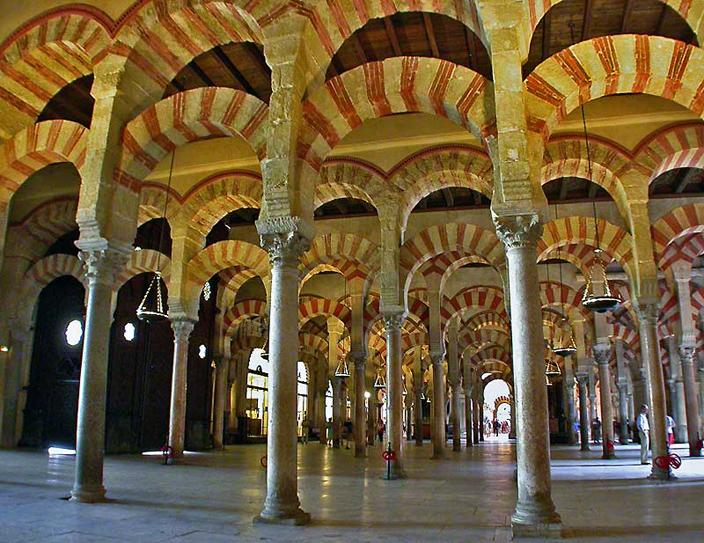
Interior of the Great Mosque of Cordoba, which had a great influence on many other buildings in Spain, and probably an indirect influence on some of the architectural elements of Durham Cathedral.
Could Andalusian Buildings Have Inspired Elements of Durham Cathedral?
Perhaps, as there are striking similarities. Saragossa was taken by Alfonso, the king of Aragon, in 1118, to become his capital, and may have been familiar to the bishops of Durham and their entourage. Another possible way in which ideas could travel was through the movement of craftsmen.
The closest similarities between Durham and Andalusian architecture are the intersecting arcades in the Cathedral nave (before 1133), and the overall structure of the Galilee Chapel, constructed in the late twelfth century.
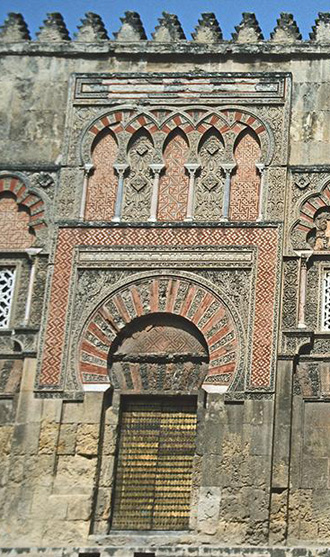
Detail of one of the entrances of the Great Mosque of Cordoba, (10th century) showing a panel of intersecting arches above the door. Note the colour combination as well.
© Hans Peter Schafer
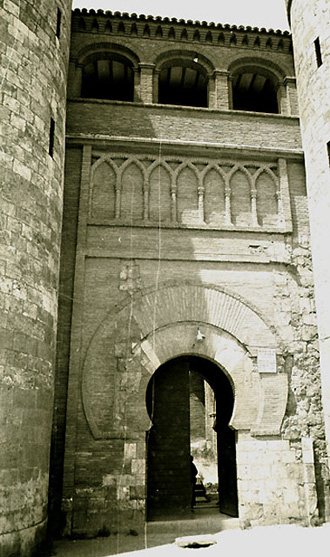
The entrance to the Jafiriyya Palace in Saragossa, 11th century, seems to have been strongly influenced by the entrance at the Great Mosque of Cordoba shown in the photograph to the left.
© Archnet
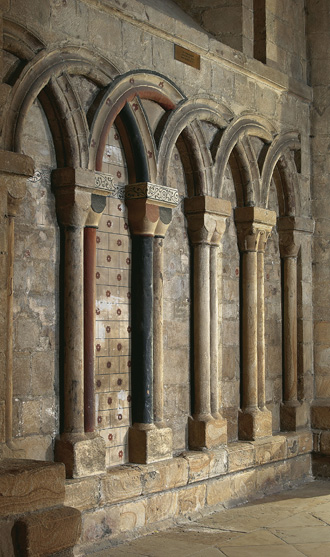
The intersecting arches inside the nave of Durham Cathedral (12th century) have much in common with the two earlier Spanish examples to the left. If the original (but retouched) traces of colour seen here are contemporary with the stonework, this arcade would have looked even more similar to the one at Cordoba than it does today.
© Durham Cathedral and Jarold Printing
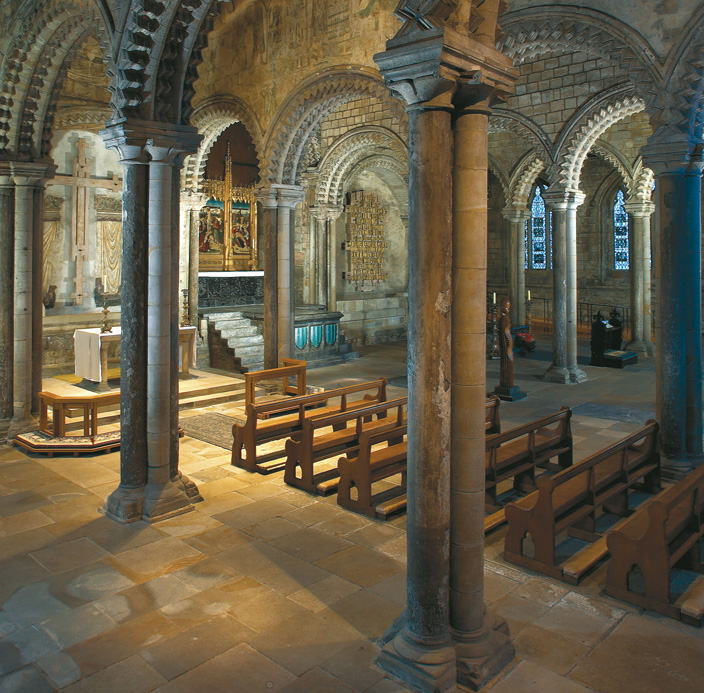
Interior of the Galilee Chapel. While the details of the Great Mosque of Cordoba and Durham's Galilee Chapel are different, the sense of space they convey is similar. Moreover, they both make use of arcades supported on graceful columns to great effect.
© Durham Cathedral and Jarrold Printing

